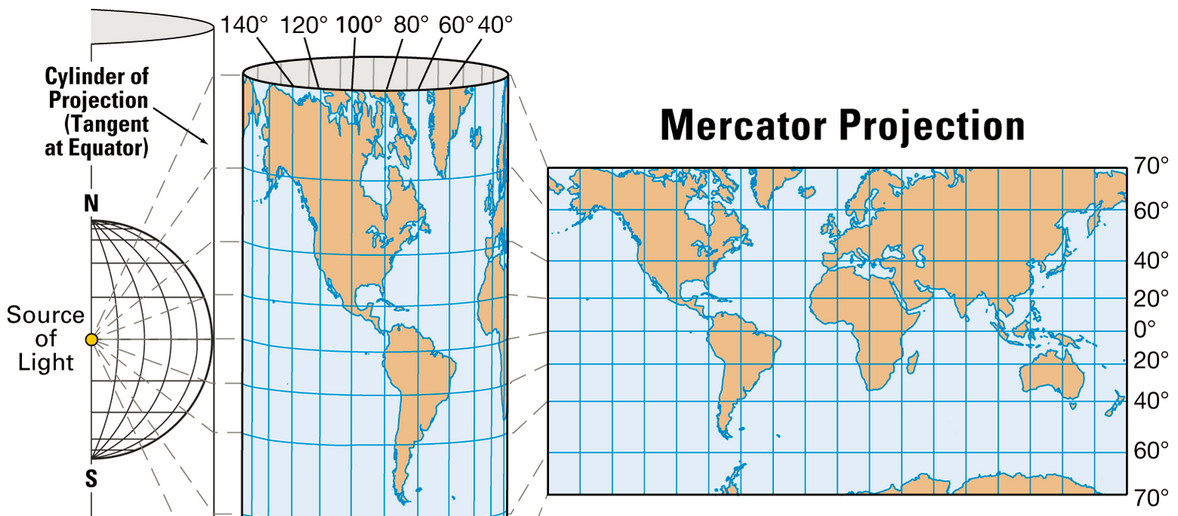In short
This is counterintuitive. Ignoring Earth curvature not shown on maps, the routes which appear curved on the screenshots are actually nearly straight. Compare these two different projections:

This is the same track, the same geographic landmarks are crossed. Still:
Left: We sense a bulging disk, the path is nearly parallel to two opposite meridians forming a circle, it must be a straight path.
Right: The path doesn't seem parallel to any meridian and we can't make sense of the heading change over Greenland. Difficult to see a straight path here.
Websites don't use the azimuthal projection of the left side because the map must be drawn with the path close to the center, while Mercator projection is unique for the whole Earth. But there is a growing demand for an adaptive map representation, adjusting the projection while zooming in/out. With current server and client processing capabilities this is possible, see this demonstration.
Commercial routes are as straight as possible, deviations are due to constraints, e.g. the maximum distance to available emergency airports, weather/conflict unsafe areas and unfavorable winds.
Details follow.
Mercator maps
In 3D, a "straight path" on a sphere is a curve. Our brain is able to identify such curve "as straight" on azimuthal projections, but on other types of map projection, specially on Mercator maps, such equivalence makes no sense. Example with azimuthal projection on the left and web Mercator on the right:

The shadow represents the night, and of course the separation between night and day is a circle, a straight path for an aircraft. It's not difficult to accept the idea the path is straight the left, but on the right, it's nearly impossible. However looking closer, we see the path crosses the same landmarks.
The map on the right side is representative of maps used on websites, a Mercator projection using a cylinder tangent to the equator:

Mercator projection, source: Encyclopedia Britannica
The only places the map is accurate is along the equator. At any other latitude, it is distorted, the distortion increasing as we get closer to the poles. It's nonsense near the poles where the meridians never converge, giving Greenland (2 million km²) the size of Africa (30 million km²).
On the image above, features are projected along straight lines. Latitude $\small \phi$ corresponds to map vertical coordinate $\small y(\phi)=r \tan \phi$. Mercator projection actually uses Mercator function, equivalent to $\small y(\phi)=r \ln(\tan(\pi/4+\phi/2))$, in order to make it conformal, the goal Mercator was actually seeking after to make ship navigation easier. The aberrant polar regions are never shown.
Your maps: Los Angeles to Grozny and Dubai
Below is a portion of the great circle from Los Angeles to Grozny, which is approximately the route shown on your last screenshot:

On the right, the Mercator map shows it curved. Parallels and meridians are circles, note how they have been converted into straight lines. This conversion introduces large distortions:
Greenland looks the same size as Africa, see the True Size of Countries to understand how much this is wrong.
All great circles except for the equator and meridians are curved, more strongly at higher latitudes.
The heading is actually constant, but near the pole, the straight line (great circle) seems to make a U-turn. This is the most counterintuitive aspect.
The flat distance for LA-Grozny on the web Mercator projection (EPSG:3857) is 18,300 km, but the real ellipsoidal distance (on WGS 84 ellipsoid) is only about 11,300 km.
This is too much to compensate for, we're not trained for than.
The flight on your last screenshot (UAE37V) was ultimately heading to Dubai. The shortest path would have put it further North than the path it actually used. This is the great circle from LA to Dubai:

Great circle from LA to Dubai, the shortest route for UAE37V
The projection problem is manifest: the aircraft is following the 120°W meridian then the 60°E meridian. These meridians are (180°) opposite on the globe and form a continuous circle. However, on the Mercator map, this circle is folded at the pole and the two meridians are made parallel lines. So the aircraft seems to turn near the pole, while it actually continues flying straight ahead.












